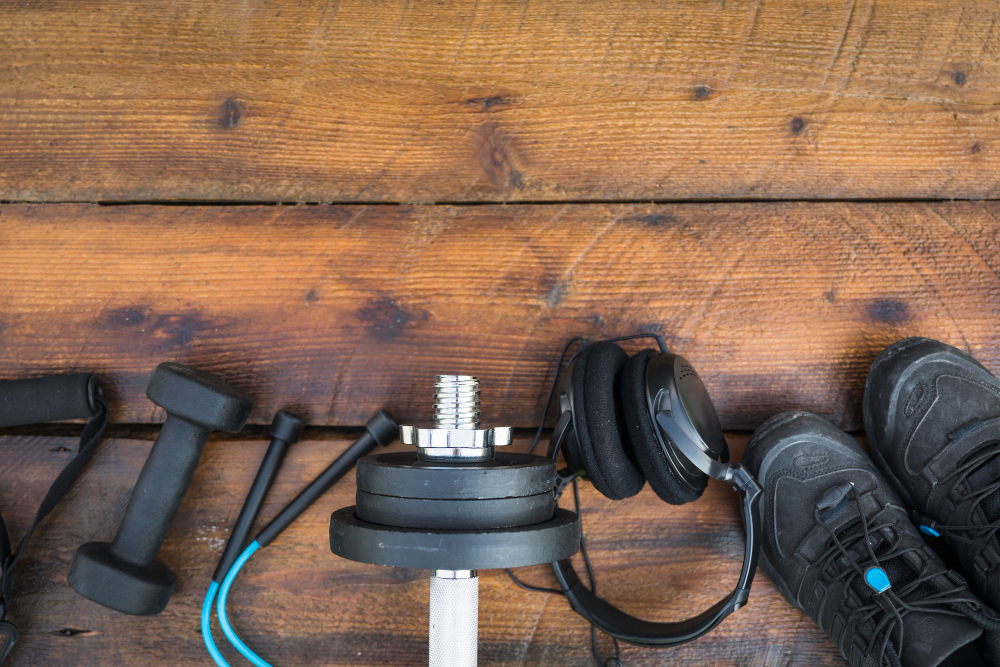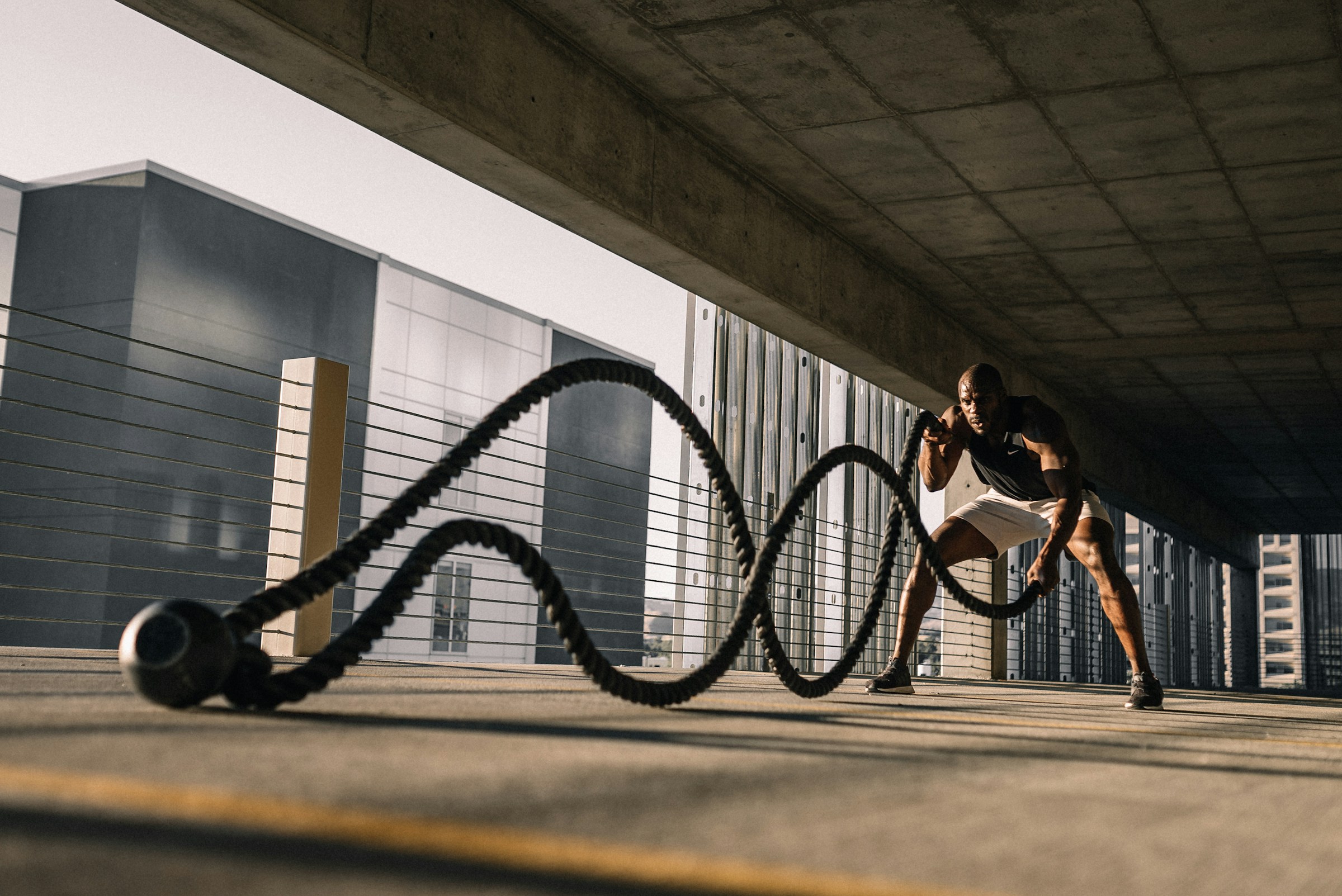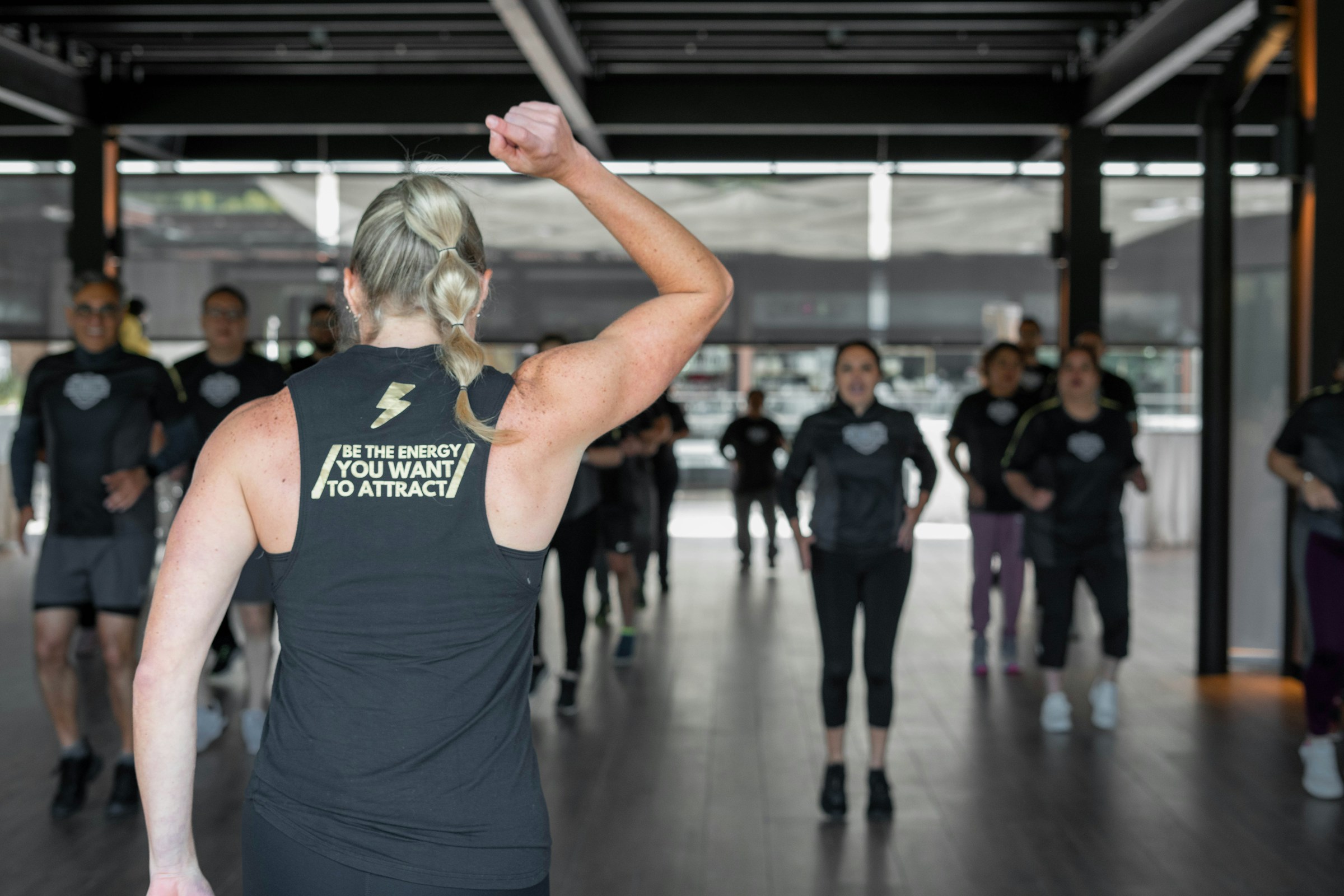Introduction – Building a Foundation for Lifelong Activity
Achieving physical fitness is a lifelong process, but it doesn’t require endless machines or complexity. A sustainable routine can be built with a small set of fundamental tools—valued not for sophistication, but for versatility, adjustability, and real-world application. This report outlines nine essential gym equipments and pieces of equipment that benefit all age groups, from youth building motor skills to older adults maintaining independence.
Each item was chosen through strict criteria:
- Scalability: Adjustable resistance and complexity for all fitness levels.
- Versatility: Ability to train multiple muscle groups and movement patterns.
- Safety & Accessibility: Beginner-friendly, joint-conscious, and adaptable to special needs.
- Functional Application: Focused on strength, endurance, and coordination for everyday tasks like lifting, carrying, and balance.
The analysis explores each tool’s purpose, key benefits, exercise guidance, age-specific adjustments, and common mistakes, with a summary table highlighting advantages across life stages.
Table 1: At-a-Glance Equipment Guide for Different Age Groups
| Equipment Name | Primary Use | Key Advantage for Youth | Key Advantage for Adults | Key Advantage for Seniors |
| Dumbbells | Foundational Strength & Muscle Development | Develops neuromuscular control and coordination with light loads.4 | Enables progressive overload for muscle hypertrophy and strength gains.5 | Improves bone density and functional strength for fall prevention.3 |
| Resistance Bands | Variable Resistance & Joint-Friendly Strength | Teaches proper movement patterns without heavy spinal loading.4 | Offers accommodating resistance for muscle activation and rehabilitation.7 | Provides safe, low-impact strength training, adaptable for seated exercises.1 |
| Kettlebells | Power, Endurance & Full-Body Conditioning | Develops explosive hip-hinge mechanics fundamental to athleticism. | Blends cardiovascular and strength training for high-efficiency workouts.9 | Builds posterior chain strength to support posture and functional lifting.10 |
| Adjustable Bench | Support, Stability & Targeted Muscle Training | Provides a stable platform for learning correct pressing and rowing form.4 | Allows for varied angles (incline, flat) to target different muscle fibers for complete development.11 | Offers crucial back support for seated exercises, enhancing safety and stability.11 |
| Treadmill | Cardiovascular Health & Weight Management | Provides a controlled environment for developing aerobic capacity.4 | Allows for precise control of variables (speed, incline) for structured interval training.12 | Offers safe, weight-bearing exercise (walking) to maintain bone density and cardiovascular health.13 |
| Stationary Bike | Low-Impact Cardiovascular Conditioning | A safe introduction to cardio exercise without the complexities of outdoor cycling.4 | Facilitates high-intensity, low-impact interval training that spares the joints.14 | Lubricates joints through motion and strengthens supporting leg muscles, easing arthritis symptoms.15 |
| Rowing Machine | Total-Body Cardiovascular & Muscular Endurance | Teaches coordinated full-body movement, linking lower and upper body strength.4 | Delivers a high-calorie-burn workout that simultaneously builds endurance and muscle.17 | Provides a low-impact, full-body workout from a seated position, ideal for joint preservation.2 |
| Stability Ball | Core Strength, Balance & Proprioception | Improves balance and core control in a dynamic and engaging way.18 | Creates an unstable surface to deepen core muscle activation in traditional exercises.19 | Enhances balance and proprioception through seated drills, directly contributing to fall prevention.1 |
| Cable Machine | Functional Strength & Multi-Planar Movement | Offers a safe, controlled introduction to resistance training with adjustable weights.4 | Allows for training in multiple planes of motion, mimicking athletic and real-world movements.21 | Provides a secure and stable environment for strength training, often preferred by older adults.22 |
The Non-Negotiable First Step: A Proper Warm-Up
A structured warm-up is a physiological necessity, not merely a formality. Research shows that warming up increases muscle temperature and blood flow, boosting performance and lowering the risk of strains or tendon injuries. It triggers circulatory and metabolic shifts that ready the body for exertion, and may even help reduce delayed-onset muscle soreness (DOMS).
Beyond safety, a warm-up primes performance by activating the nervous system. This effect, known as post-activation potentiation, enhances muscle fiber recruitment for better form, greater force, and safer execution. Dynamic warm-ups act as low-intensity rehearsals, preparing both body and mind for the workout ahead.
Universal 5-Minute Dynamic Warm-Up Routine
- March on the Spot (3 mins): Steady pace, adding forward/backward movement; swing arms to gradually raise heart rate.
- Heel Digs (30s): Extend alternating heels forward with a light punch motion, keeping the supporting leg bent to engage calves/hamstrings.
- Knee Lifts (30s): Raise knees toward opposite hands, engaging core and hip flexors.
- Shoulder Rolls (5 forward, 5 back): Loosen upper back and mobilize shoulders while marching.
- Knee Bends (10 reps): Shallow squats (10 cm depth), feet shoulder-width apart, arms forward for balance.
Dumbbells (Fixed and Adjustable)
Dumbbells are the most fundamental tool in resistance training. Compact and versatile, they can be used unilaterally or bilaterally, demanding stabilization through a free range of motion. This makes them invaluable for building strength, muscle mass, and neuromuscular coordination.
Core Benefits Across the Lifespan
Dumbbell training benefits all ages. Ten weeks of resistance training has been shown to increase lean mass (~1.4 kg), reduce fat (~1.8 kg), and raise resting metabolism by about 7%. For older adults, dumbbells preserve bone density by applying mechanical stress that stimulates bone remodeling, reducing fracture risk. They also enhance daily function—lifting, carrying, or standing up—critical for independence.
Unlike guided machines, dumbbells require joint stabilization, recruiting smaller muscles and improving intermuscular coordination. For seniors, this boosts balance, proprioception, and fall prevention, making dumbbell work not just strength training, but a tool for functional longevity.
Key Exercises (Beginner-Friendly)
- Dumbbell Front Squat: Stand with feet hip–shoulder width, dumbbells on shoulders. Brace core, drive hips back, then squat until thighs are parallel. Push through heels to stand.
- Dumbbell Chest Press: Lie on a bench, dumbbells at chest level. Press upward until arms extend, pause, lower under control.
Age-Specific Guidelines
- Youth (12+): Prioritize form with light weights (~≤5 kg).
- Adults: Apply progressive overload for growth and strength.
- Older Adults: Use lighter weights at slower tempos; try seated variations (bicep curls, presses). Cuff weights are useful if gripping is difficult.
Common Mistakes
- Squat: Knees collapse in → Correct by pushing outward; use resistance band for feedback.
- Chest Press: Excessive back arch → Engage core, press lower back to bench, keep feet flat for stability.
- stable base.
Resistance Bands (Looped, Tube, and Mini)
Resistance bands are versatile, portable tools that add resistance to nearly any movement. Available as loops, tubes with handles, or mini-bands, they support warm-ups, rehab, and full strength training. Their low-impact design makes them accessible to all populations, including those with joint pain.
Core Benefits Across the Lifespan
Studies show that elastic resistance training delivers strength gains comparable to free weights or machines. Bands also support metabolic health; in postmenopausal women, a 12-week program improved blood glucose, insulin sensitivity, and cholesterol levels. For older adults, bands enhance functional fitness—improving walking, balance, and mobility—while tube bands offer easier grips for those with arthritis.
A unique advantage is accommodating resistance: the band challenges muscles most at peak contraction and least at vulnerable joint positions, boosting effectiveness while reducing stress. This makes them ideal for rehab and joint-sensitive users.
Key Exercises
- Seated Row (Beginner/Senior-Friendly): Sit tall with legs extended, loop a band under feet, pull toward core, squeeze shoulder blades; return slowly with control.
- Monster Walk (All Levels): Place a mini-band above knees, squat slightly, step sideways while keeping tension. Repeat steps in each direction.
Age-Specific Use
- Youth: Train movement patterns (e.g., rows, squats) safely without heavy loads.
- Adults: Use for warm-up activation, accessory training, or finishers.
- Older Adults: Perform seated band presses or pulls; always inspect for cracks to avoid snapping.
Common Mistakes & Fixes
- Letting bands snap back: Correct by controlling the return phase for full muscle engagement.
- Using bands too heavy for form: Choose a lighter band to maintain correct range and technique.
Kettlebells
Kettlebells
A kettlebell is a cannonball-shaped weight with a top handle. Unlike dumbbells, its offset center of mass allows for dynamic, swinging movements that blend strength, cardio, and power in one workout.
Core Benefits Across the Lifespan
The kettlebell swing is the signature move, engaging the glutes, hamstrings, back, core, and shoulders in a single motion. High muscle recruitment drives calorie burn—up to 20 calories per minute, comparable to running at a 6‑minute mile pace. Kettlebell training also builds explosive power through ballistic hip extension, a movement central to sprinting, jumping, lifting, and balance. Training explosively improves both athletic performance and everyday function, from rising quickly from a chair to preventing falls.
Key Exercise: Two-Handed Swing (Intermediate)
- Setup: Stand with feet slightly wider than shoulders, kettlebell a foot ahead. Hinge at hips, keep back straight, grip handle.
- Initiate: “Hike” the kettlebell back between legs. Shins stay vertical.
- Swing: Drive hips forward explosively, squeezing glutes. Arms stay straight, guiding bell to chest height.
- Return: Let momentum carry it back between legs, hinge again, and continue fluidly.
Age-Specific Adjustments
- Youth: Not recommended until mastering the body-weight hip hinge.
- Adults: Swings build endurance, power, and cardio; progress to single-arm versions for added stability demands.
- Older Adults: Start with safer options like kettlebell deadlifts or goblet squats for posterior chain strength without the ballistic impact.
Common Mistakes
- Squatting instead of hinging: Correct by practicing hip hinge drills (e.g., reaching hips back to a wall).
- Lifting with arms/shoulders: Force must come from hips—at the top, the kettlebell should feel nearly weightless.
The Adjustable Weight Bench
Adjustable Weight Bench
An adjustable bench is a staple in strength training, offering flat, incline, and decline positions. This versatility expands exercise options, targets specific muscles more precisely, and provides a stable platform for safe, effective lifts.
Core Benefits Across the Lifespan
The bench increases range of motion, such as in a dumbbell chest press, which activates the chest more fully than floor presses. Adjusting angles allows targeted emphasis: incline presses hit the upper chest, flats the mid-chest, while chest-supported rows isolate the back. By changing the body’s alignment to gravity, the bench aligns resistance with different muscle fiber directions, making it a precision tool for balanced development.
Key Exercises
- Incline Dumbbell Press: Set bench at 30–45°. Sit, raise dumbbells to shoulders, and press overhead with control. Slowly lower back to chest level.
- Chest-Supported Row: Bench at ~30°. Lie face down holding dumbbells. Row by driving elbows past torso, squeezing shoulder blades; lower slowly.
Age-Specific Applications
- Youth: Provides safe stability to learn pressing and rowing basics.
- Adults: Essential for varied, targeted upper-body training.
- Older Adults: Offers back support, reducing spinal strain in exercises like shoulder presses or curls.
Common Mistakes
- Presses: Elbows flared at 90° → Tuck to 45–75° for safer, stronger shoulders.
- Rows: Jerking weight with momentum → Use lighter loads, pull smoothly, pause at top for back activation.
The Treadmill
Treadmill
A treadmill is a cornerstone of cardio training, offering walking, jogging, or running indoors with controlled speed and incline. This adaptability makes it suitable for beginners and elite athletes alike.
Core Benefits Across the Lifespan
Treadmill workouts strengthen the heart, improve circulation, and enhance cholesterol balance (raising HDL, lowering LDL), reducing risks of heart disease, hypertension, and stroke. As a weight-bearing activity, walking or running also supports bone health, lowering osteoporosis risk. Mentally, treadmill exercise boosts endorphins, helping manage stress, anxiety, and sleep.
Its biggest advantage is precision: unlike outdoor running, every treadmill session at a given speed and incline is identical, enabling measurable progression. This allows structured training, progressive overload, and accurate heart rate zone work.
Proper Form
- Posture: Stand tall, head forward, shoulders back, core engaged. Don’t hunch or look down.
- Stride: Keep feet landing under your body—avoid overstriding.
- Arms: Swing from shoulders at ~90° angles, relaxed hands.
- Handrails: Use only for balance or emergencies, not during exercise.
Age-Specific Applications
- Youth: Safe option under supervision for endurance building.
- Adults: Ideal for HIIT—short sprints with walking recovery maximize results.
- Older Adults: Incline walking provides intensity without high-impact stress; some treadmills offer low-impact cushioning.
Common Mistakes
- Overstriding: Correct by increasing cadence—shorter, quicker steps land closer to your body, reducing stress.
- Hunching/looking down: Fix by keeping eyes on a point ahead, lifting head and chest for posture and breathing efficiency.
The Stationary Bike (Upright and Recumbent)
Stationary Bike
The stationary bike delivers the benefits of cycling indoors while being low-impact and joint-friendly. Two main types exist: the upright bike, which mimics outdoor cycling posture, and the recumbent bike, which has a supportive seat and pedals positioned forward.
Core Benefits Across the Lifespan
Cycling elevates heart health without stressing knees, hips, or ankles, making it ideal for arthritis, joint pain, or injury recovery. The pedaling motion promotes synovial fluid production, easing friction and improving joint comfort—especially in knee osteoarthritis. It also strengthens the quadriceps, hamstrings, and glutes, improving joint stability and shock absorption.
For those unable to perform weight-bearing exercise (due to surgery or severe arthritis), the bike serves as a safe “bridge” to maintain cardiovascular fitness and muscle without overloading joints, preserving both function and quality of life.
Proper Setup & Form
- Seat height: Align seat with hip bone. At the bottom of a pedal stroke, the knee should have a slight bend (5–10°). Too high = hip rocking; too low = knee strain.
- Posture: Keep spine neutral, core engaged, shoulders relaxed, elbows slightly bent.
Age-Specific Applications
- Youth: Simple, safe cardio option.
- Adults: Versatile for steady-state endurance or HIIT (intervals of high resistance/speed).
- Older Adults: Recumbent bikes offer maximum stability, comfort, and back support—ideal for balance challenges or mobility limits.
Common Mistakes
- Wrong seat height: Adjust using heel-on-pedal method for proper knee bend.
- Pedaling only downward: Instead, use a full pedal stroke—push down, sweep through, pull up, and push over—to engage both quads and hamstrings efficiently.
The Rowing Machine
Rowing Machine (Ergometer)
The rowing machine simulates on-water rowing with a sliding seat, handle, and footplates. Performed seated, it offers a demanding yet low-impact cardio and strength workout that engages the whole body.
Core Benefits Across the Lifespan
A single stroke recruits ~86% of the body’s muscles, with 65–75% from the legs and ~25–35% from the upper body. This total-body engagement burns calories efficiently while protecting joints, making rowing suitable for all ages and fitness levels.
Rowing uniquely integrates a push (leg drive) with a pull (row finish), requiring strong core engagement to transfer force between upper and lower body. This builds functional strength, coordination, and power across the kinetic chain.
Proper Stroke Technique
- Catch: Seat forward, shins vertical, arms straight, slight forward lean.
- Drive: Push hard through heels, extending legs first, then swing torso back.
- Finish: With legs straight, lean slightly back, pull handle to ribs.
- Recovery: Reverse the sequence—arms extend, hinge forward, bend knees, return to start. (Mantra: Legs → Core → Arms on drive, Arms → Core → Legs on recovery.)
Age-Specific Use
- Youth: Focus on learning stroke sequence, not speed/power.
- Adults: Great for steady cardio or high-intensity intervals, improving strength and endurance simultaneously.
- Older Adults: Low impact and joint-friendly, but posture is key. Start with light resistance, maintain neutral spine, hinge at hips.
Common Mistakes
- Using arms too early: Wait until legs are nearly extended before pulling. Arms should act as connectors early in the drive.
- Rounding the back: Avoid hunching. Keep chest up, back neutral, and hinge from hips to protect the spine.
The Stability Ball
Stability Ball
Also known as a Swiss or exercise ball, the stability ball adds instability to movements, requiring deeper engagement of core and stabilizing muscles. Its versatility makes it a valuable tool for core strength, balance, and proprioception.
Core Benefits Across the Lifespan
Training on the ball activates the deep core muscles more intensely than floor work. Even simple tasks, like sitting on the ball with one foot lifted, challenge balance and proprioception—key for fall prevention. Beyond core training, the ball can be used for glute bridges, hip thrusts, pikes, and even as an unstable “bench” for free-weight presses.
Its greatest value lies in creating a proprioceptively enriched environment. Unlike flat surfaces, the unstable base forces reflexive muscle activation, teaching the body better motor control, balance, and injury-preventing reactivity.
Key Exercises
- Ball Crunch: Sit on the ball, roll it under the lower back, hands behind head or across chest. Brace core, exhale and curl shoulders up, then lower with control.
- Ball Hip Thrust: Lie on back, heels on ball. Drive hips up until body forms a straight line from shoulders to feet, then lower slowly.
Age-Specific Applications
- Youth: Fun introduction to balance/core work.
- Adults: Add instability to traditional lifts (e.g., ball chest press) or progress to advanced moves like pikes and rollouts.
- Older Adults: Useful for seated balance drills—perform near a wall for safety. Always use a correctly sized ball (hips slightly above knees when seated).
Common Mistakes
- Wrong ball size: Choose based on height (e.g., 55 cm for 5’0”–5’6”, 65 cm for 5’7”–6’1”).
- Breath holding: Instead, breathe steadily—exhale on exertion, inhale on return—to stay stable and relaxed.
The Cable Machine (Functional Trainer)
Cable Machine (Functional Trainer)
The cable machine features adjustable pulleys attached to weight stacks, allowing resistance from nearly any angle. Its versatility makes it a top tool for functional training, replicating real-world movements more effectively than many other machines.
Core Benefits Across the Lifespan
Unlike free weights, cables provide constant tension through the lift and lowering phase, driving muscle growth and control. Its multi-plane capacity allows for pushing, pulling, and twisting patterns that translate directly to sports and daily life. It can bridge the gap between isolated muscle work and integrated neuromuscular training. Safe, guided motion also makes it suitable for beginners, solo trainees, and rehabilitation.
Key Exercises
- Lat Pulldown: Sit secured under thigh pad, wide overhand grip on bar. Lean back slightly, pull elbows down to chest, squeeze back, then return slowly.
- Pallof Press (Core Stability): Stand sideways to pulley at chest height, handle held to chest. Step back, brace, then press arms straight out, resisting twist. Return slowly, repeat on both sides.
Age-Specific Applications
- Youth (12+): Safe intro due to pin-loaded resistance and easy adjustability.
- Adults: Useful for both aesthetics (e.g., chest crossovers) and complex sports-style moves (lunges, chops).
- Older Adults: Controlled resistance and stability make it comfortable for maintaining strength and reducing injury risk.
Common Mistakes
- Using momentum: Swinging torso instead of pulling with muscles → Lower weight, move deliberately.
- Letting stack slam down: Loss of eccentric control → Slow, steady return phase for muscle growth and safety.
Integrating Equipment into a Cohesive Plan: Sample Workouts
Integrating Equipment into a Workout Plan
Knowing how equipment works is only the first step—using it in a structured workout is where results happen. The following templates balance strength, cardio, and functional fitness. Always prioritize form over weight or reps.
Workout A: Foundational Strength (Beginner/Intermediate)
Focus: General strength and muscle development.
Format: 3 sets of 10–12 reps, 60–90s rest between sets.
- Dumbbell Goblet Squat: Quads, glutes, core.
- Dumbbell Bench Press (Bench): Chest, shoulders, triceps.
- Seated Cable Row: Upper back, biceps.
- Kettlebell Deadlift: Glutes, hamstrings, lower back.
- Pallof Press (Cable): Core stability/anti-rotation.
- Resistance Band Pull-Apart: Shoulder health/posture.
Workout B: Joint-Friendly Cardio Circuit
Focus: Cardiovascular endurance with low impact.
Format: Perform each for 10 mins; cycle through 2–3 rounds with minimal rest.
- Stationary Bike: Moderate pace.
- Rowing Machine: Steady strokes, focus on form.
- Treadmill: Brisk incline walk (3–4 mph, 5–8% incline).
Workout C: Functional Fitness for Active Aging
Focus: Strength, balance, and independence.
Format: 2 sets of 12–15 slow, controlled reps.
- Chair Squats: With or without light dumbbell.
- Seated Band Row: Upper back, posture.
- Standing Calf Raises: For walking stability.
- Stability Ball Marches (near wall): Core and balance.
- Wall Push-Ups: Safe upper-body strength.
Sample Weekly Schedule
A balanced week ensures variety and recovery:
- Mon: Workout A (Strength)
- Tue: Workout B (Cardio) or Active Recovery (walking)
- Wed: Rest
- Thu: Workout A (Strength)
- Fri: Workout B (Cardio) or Workout C (Functional)
- Sat: Active Recovery (light stretch/walk)
- Sun: Rest
The Critical Final Step: A Purposeful Cool-Down
Cool-Down and Recovery
Just as warm-ups prepare the body, cool-downs help it return to rest. While research is mixed on preventing soreness, cooling down supports circulation, flexibility, and gradual normalization of heart rate and blood pressure.
5-Minute Static Stretching Routine
Hold each for ~30 seconds, keeping stretches gentle and pain-free:
- Seated Hamstring Stretch: Sit on chair edge, extend one leg, lean forward at hips to stretch back of thigh.
- Quadriceps Stretch: Stand holding support, pull one ankle toward glutes for a front-thigh stretch.
- Chest Stretch: In doorway, forearms on frame slightly below shoulders, step through to open chest.
- Upper Back Stretch: Clasp hands in front, round back, and reach forward to stretch between shoulder blades.
- Calf Stretch: Hands on wall, step one leg back with heel flat, lean into wall to stretch calf.
Conclusion – Your Toolkit for a Lifetime of Health
Conclusion
Lifelong fitness doesn’t demand endless machines—just nine essentials: dumbbells, resistance bands, kettlebells, an adjustable bench, treadmill, stationary bike, rowing machine, stability ball, and cable machine. Together, they provide everything needed to build strength, endurance, power, and balance across all ages.
Success depends less on variety and more on consistency and proper technique. Each tool offers unique benefits, from the stabilization required by dumbbells to the joint-friendly resistance of bands and the functional movement training of cables.
True progress comes from adapting exercises to individual ability. Modifications aren’t weakness but smart training. By starting gradually, respecting the body’s feedback, and embracing fitness as an ongoing practice, anyone can use these tools to create a healthier, stronger, and more resilient life.








